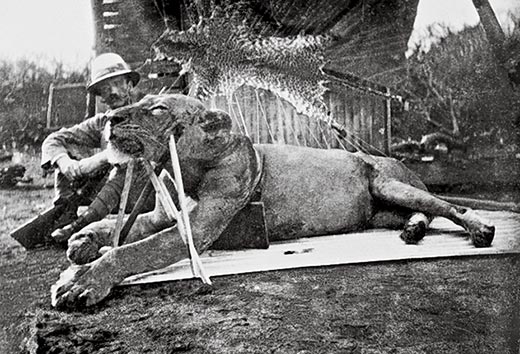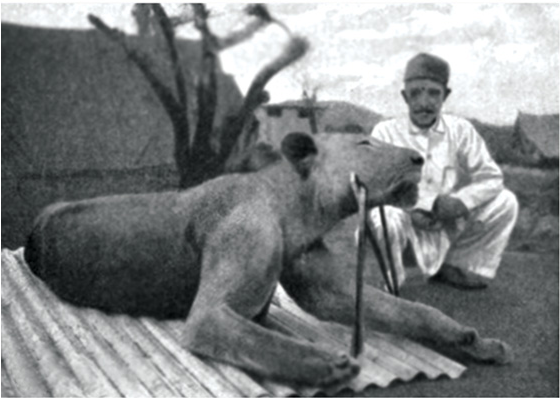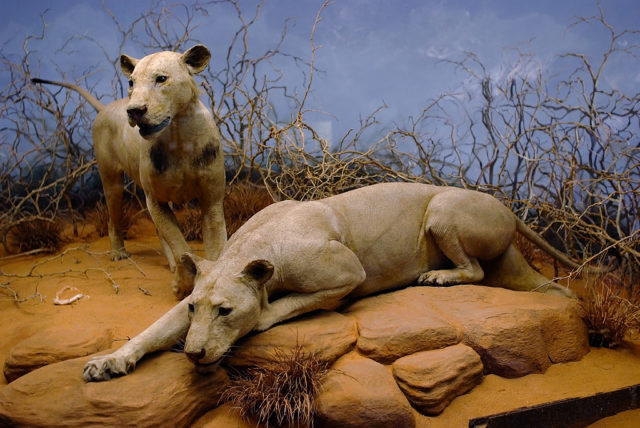In March, 1898, the British started building a railway bridge over the Tsavo River in Kenya. The project was led by Lt. Col. John Henry Patterson.
During the next nine months of construction, two maneless male Tsavo lions stalked the campsite, dragging Indian workers from their tents at night and devouring them. Crews tried to scare off the lions and built campfires and bomas, or thorn fences, around their camp for protection to keep the man-eaters out, to no avail.
The lions leaped over or crawled through the thorn fences. After the new attacks, hundreds of workers fled from Tsavo, halting construction on the bridge.
Patterson set traps and tried several times to ambush the lions at night from a tree. After repeated unsuccessful attempts, he shot the first lion on 9 December 1898. Twenty days later, the second lion was found and killed. The first lion killed measured nine feet, eight inches from nose to tip of tail.
It took eight men to carry the carcass back to camp. The construction crew returned and finished the bridge in February 1899. The exact number of people killed by the lions is unclear. Patterson gave several figures, overall claiming that there were 135 victims.

Patterson writes in his account that he wounded the first lion with one bullet from a high caliber rifle. This shot struck the lion in its back leg, but it escaped. Later, it returned at night and began stalking Patterson as he tried to hunt it.
He shot it through the shoulder, penetrating its heart with a more powerful rifle, and found it lying dead the next morning not far from his platform. The second lion was shot at most nine times, five with the same rifle, three with a third and once with a fourth rifle.

The first was fired from atop a scaffolding Patterson had built near goat kills done by the lion. Two, both from the second rifle were shot into it eleven days later as the lion was stalking Patterson and trying to flee. When they found the lion the next day thereafter.
Patterson shot it three more times with the same rifle, severely crippling it, and shot it three times with the third rifle, twice in the chest, and once in the head, which killed it. He claimed it died gnawing on a fallen tree branch, still trying to reach him.

After 25 years as Patterson’s floor rugs, the lions’ skins were sold to the Chicago Field Museum in 1924 for a sum of $5,000. The lions’ skins arrived at the museum in very poor condition.
The lions were then reconstructed and are now on permanent display along with the original skulls.
